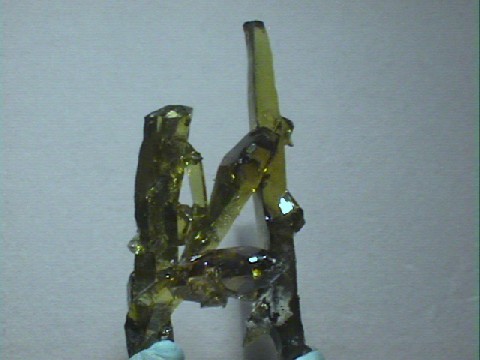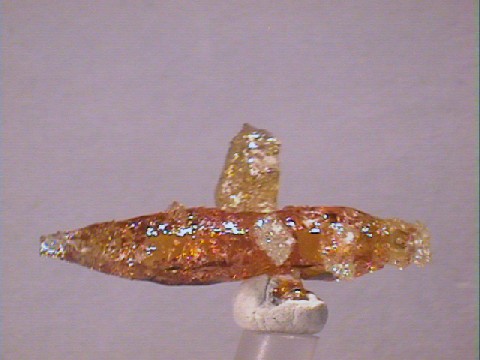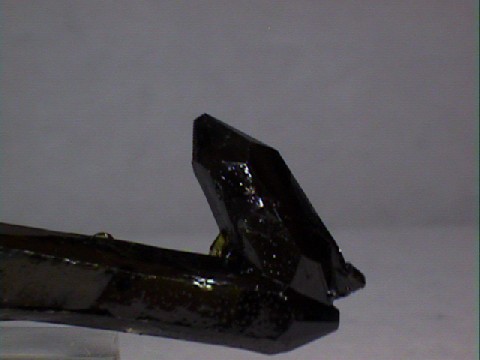 The Mineral ZINCITE
The Mineral ZINCITE
- Chemical Formula: ZnO , Zinc Oxide
- Class: Oxides and Hydroxides
- Uses: An ore of zinc and as mineral specimens.
Specimens
The structure of zincite consists of tetrahedrons of ZnO4. The tetrahedrons in zincite all are oriented in one direction and produce the hexagonal (six fold rotational) symmetry. The major axis is symmetrically polar and results in a hemimorphic crystal structure. In other words, there is no symmetry element, like a mirror or two fold rotational axis, perpendicular to the major axis and thus crystal faces on top of the crystal are not repeated on the bottom of the crystal. Hemimorphic crystals have different looking tops from their bottoms, as if they never completed the opposite, symmetrical, side; therefore the term hemimorphic or half shape. Other minerals besides zincite that have a hemimorphic character are the tourmalines, hemimorphite (what's the first clue?), greenockite and wurtzite; among others.
PHYSICAL CHARACTERISTICS:
- Color is orange-yellow to deep red or brown.
- Luster is adamantine.
- Transparency crystals are commonly translucent more rarely transparent.
- Crystal System is hexagonal; 6 m m
- Crystal Habits include rarely well shaped, over all, hemimorphic pyramidal crystals sometimes with an hexagonal prism terminated by the basal face of a pedion on one side and the sharp point of the pyramid on the other. Usually found as rounded granular crystals; also massive in veins and lamellar.
- Cleavage is good in three directions (prismatic).
- Fracture is conchoidal.
- Hardness is 4
- Specific Gravity is 5.4 - 5.7 (slightly heavy even for metallic minerals)
- Streak is orange-yellow.
- Other Characteristics: There is a basal parting.
- Associated Minerals include calcite,
rhodonite,
willemite,
franklinite,
tephorite,
pyroxmangite and other rare Sterling Hill and Franklin, New Jersey minerals. - Notable Occurrences include the Sterling Hill and Franklin, New Jersey, USA locations where it is found in abundance. Some occurrences from where zincite is found but in much scarcer quantities include Tuscany, Italy; Tsumeb, Namibia; the Dick Weber Mine, Colorado, USA; Poland, Spain and Tasmania, Australia.
- Best Field Indicators are luster, color, occurrence, associations, cleavage, parting and streak.



















































